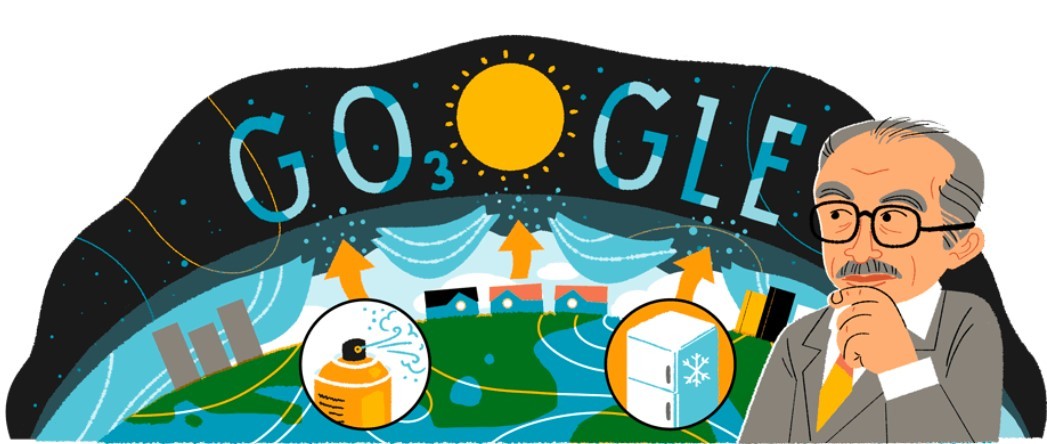Google Doodle today paid a rich honor to the late Mario Molina, a Mexican chemist who won the Nobel Prize in Chemistry in 1995 for his groundbreaking work on the effects of man-made chemicals on the Earth’s ozone layer. Molina’s research led to the discovery of the impact of chlorofluorocarbons (CFCs) on the ozone layer, which ultimately led to the creation of the Montreal Protocol, a landmark international agreement to protect the ozone layer.
Mario Molina was born on March 19, 1943, in Mexico City. He studied chemical engineering at the National Autonomous University of Mexico (UNAM) and later pursued graduate studies at the University of Freiburg in Germany, where he obtained his PhD in physical chemistry. Molina’s research career began at the University of California, Berkeley, where he worked on the photochemistry of pollutants in the atmosphere.
Molina’s most significant contribution to science came in the early 1970s when he and his colleague, F. Sherwood Rowland, began studying the effects of CFCs on the ozone layer. At the time, CFCs were widely used in refrigerators, air conditioners, and other industrial products, and their impact on the ozone layer was not fully understood.
In an interview with the Nobel Prize organization, Mario Molina recalled the moment when he realized the gravity of the situation. “One day, while walking in the park with my son, I suddenly realized that these chemicals we had been studying were all over, in the refrigerators and air conditioners that we used every day. I realized that this was a global problem, and that we had to do something about it.”
Molina and Rowland’s research demonstrated that CFCs could reach the upper atmosphere, where they would break down and release chlorine atoms, which then reacted with ozone molecules, leading to the depletion of the ozone layer. Their work was met with skepticism from the chemical industry, which disputed their findings and accused them of alarmism.
Despite the pushback, Molina and Rowland’s research proved to be correct, and in 1985, the discovery of the Antarctic ozone hole provided the visual evidence needed to galvanize action. Molina was a key figure in the negotiations that led to the Montreal Protocol, which has been hailed as one of the most successful environmental agreements in history. The protocol led to a phase-out of CFCs and other ozone-depleting substances, which has led to a gradual recovery of the ozone layer.
Mario Molina was a passionate advocate for science education
In addition to his work on the ozone layer, Molina was also a passionate advocate for science education and science diplomacy. He founded the Mario Molina Center for Energy and Environment, a non-profit organization that focuses on sustainable development and environmental protection in Mexico and other countries in Latin America.
Molina passed away on October 7, 2020, at the age of 77. In a statement, the Mario Molina Center described him as a “visionary scientist and leader who made significant contributions to science, the environment, and society.” His legacy lives on in the ongoing efforts to protect the Earth’s ozone layer and address the challenges of climate change.
As Molina himself once said, “Science can help us make better decisions, but it is not enough. We need to work together, across borders and sectors, to find solutions to the environmental challenges we face.” His words serve as a reminder that science and collaboration are essential tools for creating a better world.
In conclusion, Mario Molina was a visionary scientist whose work on the ozone layer has had a profound impact on the environment and society. His legacy serves as a reminder of the power of science and collaboration to address some of the world’s most pressing challenges. As we honor his memory, let us continue to work






